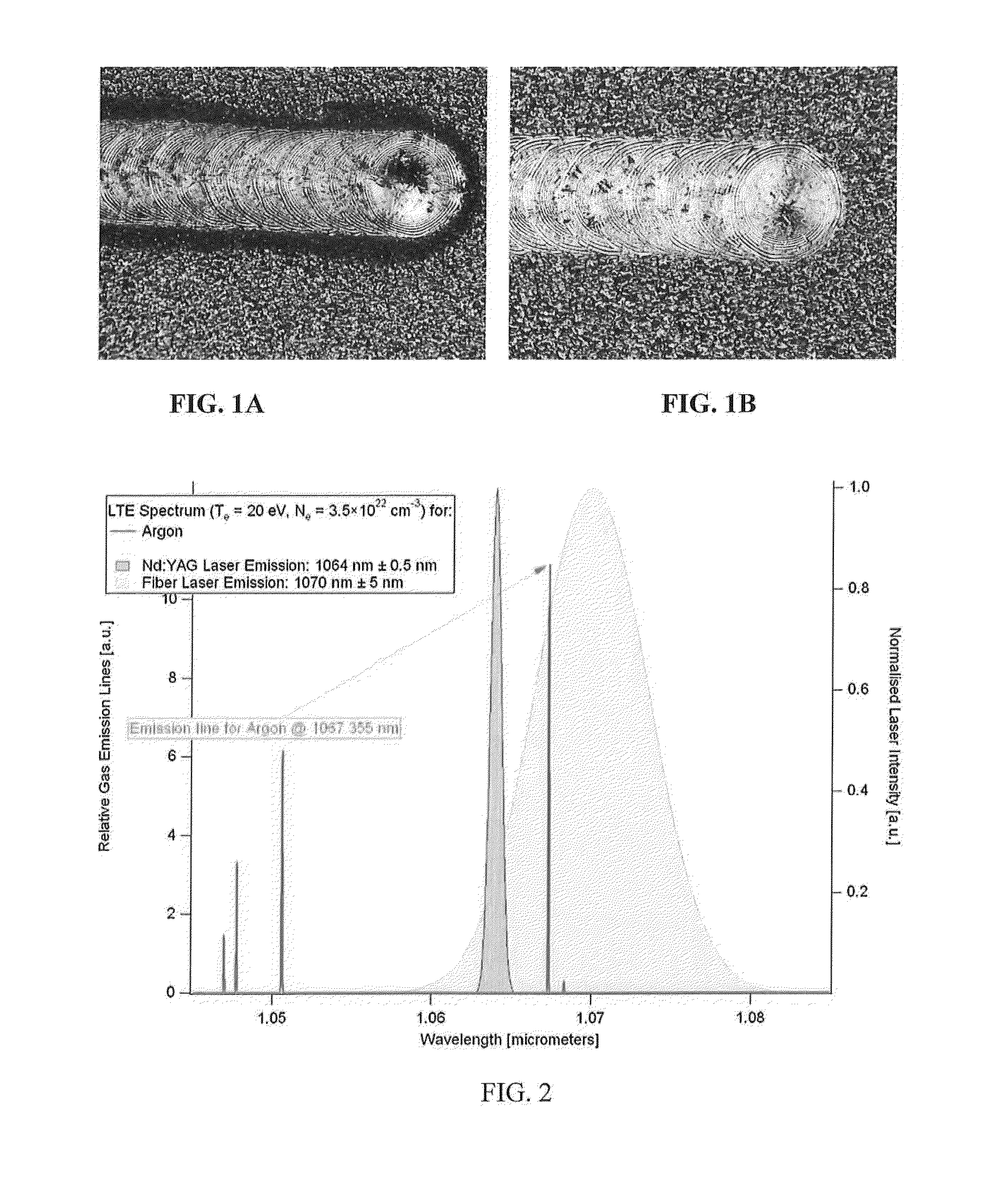System and Method Utilizing Fiber Lasers for Titanium Welding Using an Argon Cover Gas
a technology of fiber laser and cover gas, which is applied in the direction of welding apparatus, manufacturing tools, other manufacturing equipment/tools, etc., can solve the problems of high commercial cost and disfavored crystallization, and achieve the effect of reducing the contaminant content of the plasma formed
- Summary
- Abstract
- Description
- Claims
- Application Information
AI Technical Summary
Benefits of technology
Problems solved by technology
Method used
Image
Examples
Embodiment Construction
[0031]Reference will now be made in detail to several embodiments of the invention that are illustrated in the accompanying drawings. Wherever possible, same or similar reference numerals are used in the drawings and the description to refer to the same or like parts or steps. The drawings are in simplified form.
[0032]As noted earlier during simple substitution there was a surprisingly high soot generation when yielding in an Argon (Ar) cover gas and substituting a solid state Nd:YAG laser at 1064 nm with a conventional fiber laser at 1070 nm using all other similar factors. This was unacceptable and during development of the present invention the inventors determined that the fiber laser-matter interaction was fundamentally different from Nd:YAG laser-matter interactions because the resulting plasma with the fiber laser indicated a much larger and brighter white / blue spectral signal when compared with a smaller less intense white / yellow spectral signal produced with Nd:YAG lasers.
[...
PUM
| Property | Measurement | Unit |
|---|---|---|
| Thickness | aaaaa | aaaaa |
| Density | aaaaa | aaaaa |
| Speed | aaaaa | aaaaa |
Abstract
Description
Claims
Application Information
 Login to View More
Login to View More - R&D
- Intellectual Property
- Life Sciences
- Materials
- Tech Scout
- Unparalleled Data Quality
- Higher Quality Content
- 60% Fewer Hallucinations
Browse by: Latest US Patents, China's latest patents, Technical Efficacy Thesaurus, Application Domain, Technology Topic, Popular Technical Reports.
© 2025 PatSnap. All rights reserved.Legal|Privacy policy|Modern Slavery Act Transparency Statement|Sitemap|About US| Contact US: help@patsnap.com



